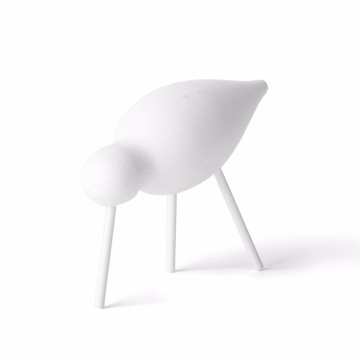Tempura Trails: A Flavorful Journey Through Japan
The Origins of Tempura: A Culinary History
Tempura holds a significant place in Japanese culinary tradition, tracing its origins back to the 16th century. The introduction of this flavorful dish is credited to Portuguese missionaries and traders who arrived in Japan during this time. As they shared their cooking techniques, they brought with them a method of batter-frying food that would eventually evolve into the tempura we know today. The term "tempura" itself is believed to be derived from the Latin word "tempora," referring to the Ember Days, when Catholics abstained from eating meat and consumed fish and vegetables instead.
Initially, tempura was prepared using a variety of ingredients, including seafood and seasonal vegetables. The concept of enveloping these ingredients in a light batter and frying them in oil marked a significant departure from traditional Japanese cooking styles, which primarily focused on steaming and grilling. Over time, this dish underwent substantial evolution and adaptation within Japan, incorporating local ingredients and flavors, thus developing a distinct identity within Japanese cuisine.
Traditional preparation methods of tempura emphasize the importance of high-quality ingredients and precise techniques. The batter is typically made with a mixture of cold water and wheat flour, known for its light texture. Often, eggs or cornstarch may be added to enhance the final product's crispiness. Eager chefs employ various frying techniques, ensuring the oil is at the optimal temperature for frying, which ensures a beautifully golden and airy texture. Seasonal and regional variations of tempura continue to emerge, showcasing local produce and unique flavors, further solidifying tempura's status as an iconic Japanese dish.
As tempura has gained global popularity, it remains essential to appreciate its rich history and the influences that shaped it. The fusion of Portuguese and Japanese culinary practices is a testament to the ongoing evolution of this delightful dish, firmly rooting tempura within the tapestry of Japan's gastronomic heritage.
The Art of Tempura: Techniques and Ingredients
Tempura is not just a dish; it is an art form that requires precision and skill to master. The preparation of tempura fundamentally revolves around two critical components: the batter and the frying technique. The batter typically consists of a mixture of flour, cold water, and sometimes egg. The key to achieving the ideal texture lies in the consistency of the batter, which should be lumpy yet light. This unique texture allows for optimal adherence to the ingredients being fried, which include a variety of seafood and vegetables.
Temperature plays a crucial role in the frying process. It is essential to maintain the oil at around 180°C to 190°C (350°F to 375°F), as this allows the batter to crisp up rapidly while ensuring that the ingredients remain tender and juicy on the inside. Insufficient heat can lead to greasy tempura, while excessive heat may burn the batter before the interior has time to cook. Therefore, it is advisable for home cooks to use a thermometer for consistent results.
In terms of ingredients, tempura can incorporate a vast array of seasonal vegetables, such as sweet potatoes, green beans, and bell peppers, as well as proteins like shrimp, squid, and white fish. Each ingredient contributes its unique flavor and texture to the final dish, and selecting high-quality, fresh items is paramount for achieving an exceptional tempura. Moreover, thoughtful combinations can enhance the overall sensory culinary experience of the dish.
For those looking to recreate the tempura culinary experience at home, it is advisable to practice and focus on the balance between batter consistency and frying temperature. Experimenting with different ingredients and adhering to these techniques will ultimately lead to the perfect crunch and flavor that tempura aficionados appreciate. Mastering the art of tempura provides not only culinary satisfaction but also a glimpse into the rich heritage and tradition of Japanese cuisine.
Regional Variations: Tempura Across Japan
Tempura is a beloved dish that exemplifies Japan's culinary artistry and regional diversity, with each area showcasing its own unique interpretations. Originating in the 16th century through Portuguese influence, Japanese tempura has since evolved into a distinct form of cuisine that varies greatly from region to region. This is greatly attributed to the local purveyance of ingredients and traditional cooking methods.
In Kanazawa, situated along the Sea of Japan, tempura is heavily influenced by the region's abundant seafood. Known for its fresh ingredients, Kanazawa's tempura often features specialty catches like squid and shrimp, lightly battered and deep-fried to achieve a delicate crunch that perfectly complements the fresh produce. Renowned establishments in this region, such as Tempura Ippuku, are celebrated for their expertise in crafting tempura that emphasizes the natural flavors of the seafood, paired with unique dipping sauces that elevate the dining culinary experience.
Conversely, Kyoto's interpretation of tempura leans more towards seasonal vegetables, reflecting the city’s renowned kaiseki cuisine. In Kyoto, you will find a variety of vegetables, such as sweet potatoes and lotus root, prepared with an emphasis on presentation and natural flavors. One of the best spots to explore this variant is Tempura Yoshikawa, where each individual ingredient is carefully selected based on the time of year. This dedication to freshness not only enhances the dish but also mirrors the philosophical approach to food prevalent in Kyoto's culinary landscape.
From the bustling streets of Tokyo, with its innovative takes on traditional recipes, to the southern shores of Kyushu, where tempura may be paired with local specialties, the journey to discover tempura across Japan is rich and diverse. Each region not only showcases a distinct flavor profile but also provides a cultural narrative that enriches the tempura culinary experience, making it a true expression of Japan’s regional heritage.
Tempura Today: Modern Innovations and Pairings
Tempura, a dish rooted in history, has seen remarkable evolution in contemporary Japanese dining. While traditionally known for its light and crispy batter encasing a variety of vegetables and seafood, modern chefs have begun to explore innovative twists that elevate this classic delicacy. In today’s culinary landscape, tempura is not only a beloved staple in casual dining but has also found its niche within high-end gastronomy, signaling a resurgence in appreciation for this traditional dish.
One notable trend is the integration of unique ingredient combinations. Chefs experiment with non-traditional items, such as avocado, asparagus, or even cheese, enhancing the flavor profile while maintaining the crispy texture that tempura is renowned for. This creativity extends to the batter itself, with variations that incorporate different flours, spices, or even carbonated water to achieve an exceptional lightness.
Pairing tempura with complementary sauces and sides has also gained prominence. The classic tentsuyu, a dipping sauce made from mirin, soy sauce, and dashi, persists as a popular choice. However, modern interpretations include vibrant sauces infused with flavors like citrus or herbs, offering a fresh contrast to the rich batter. Additionally, sides such as steamed rice or pickles are often served alongside tempura, enhancing the overall dining experience.
A growing trend within the realm of tempura is its pairing with wines or craft beers, an approach that reflects a departure from traditional beverage pairings. This fusion of flavors allows diners to explore new taste dimensions, making tempura a versatile option for both casual and fine dining atmospheres. With a renewed focus on creativity and flavor pairing, tempura continues to inspire chefs and food enthusiasts, ensuring its place on contemporary menus remains secure.




